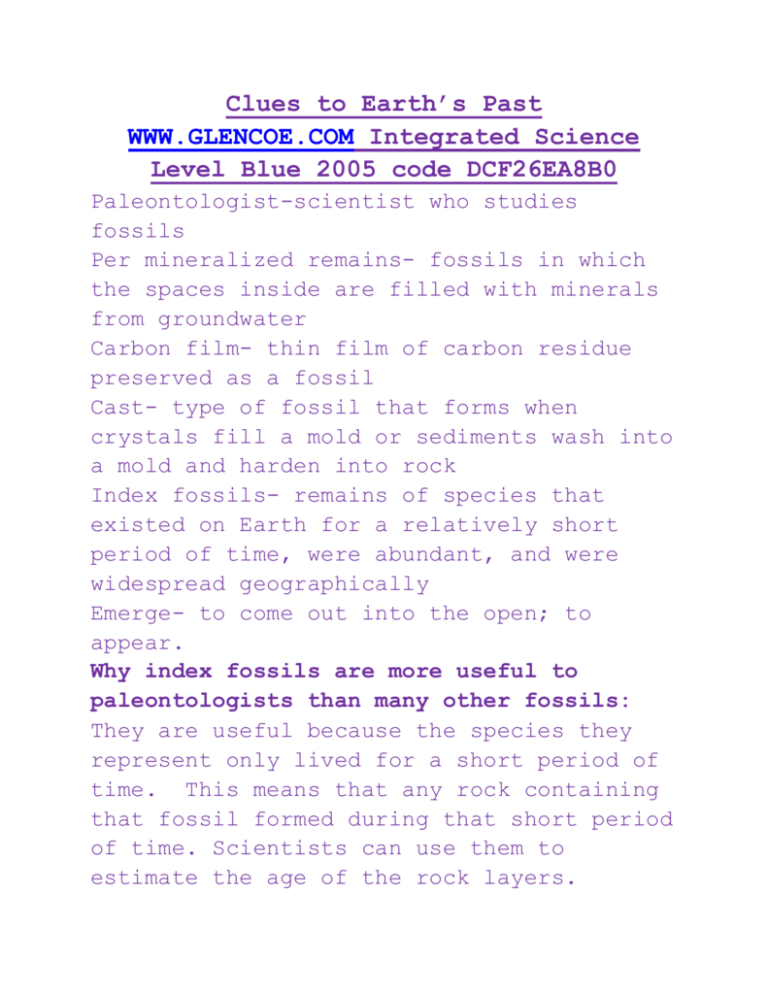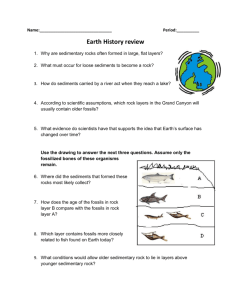Index Fossils and Principle of Superposition Notes
advertisement

Clues to Earth’s Past WWW.GLENCOE.COM Integrated Science Level Blue 2005 code DCF26EA8B0 Paleontologist-scientist who studies fossils Per mineralized remains- fossils in which the spaces inside are filled with minerals from groundwater Carbon film- thin film of carbon residue preserved as a fossil Cast- type of fossil that forms when crystals fill a mold or sediments wash into a mold and harden into rock Index fossils- remains of species that existed on Earth for a relatively short period of time, were abundant, and were widespread geographically Emerge- to come out into the open; to appear. Why index fossils are more useful to paleontologists than many other fossils: They are useful because the species they represent only lived for a short period of time. This means that any rock containing that fossil formed during that short period of time. Scientists can use them to estimate the age of the rock layers. Information about environment revealed by fossils If area was land or covered by water. In areas that were covered by water, depth of the water Past climate of the area Principle of superposition Relative age Unconformity Sequence- one thing following another in a fixed order When you know the relative age of a rock layer, you know only how old it is compared with other things, such as other rock layers. When you know the actual age of a layer of rock, you know approximately how many years old the rock layer is. Model how a folded rock formation would form: Drawing should show horizontal rock layers Drawing should show the same layers folded. Angular Unconformity: 1. Layers of sedimentary rock are tilted and uplifted. 2. Exposed rock layers erode. 3. Sedimentary layers are deposited on top. Disconformity: 1. Sedimentary rock is exposed. 2. Some rock layers erode. 3. Sedimentary layers are deposited on top. Nonconformity: 1. Igneous or metamorphic rocks are uplifted. 2. Exposed rock erodes. 3. Sedimentary layers are deposited on top. Match up rock layers Following the layer across an area Using fossil evidence that shows the same types of fossils in both places







![F3-4 Study Guide for QUIZ [1/28/2016]](http://s3.studylib.net/store/data/006814899_1-56a576b1a51c0f876f28a8da0f15de89-300x300.png)